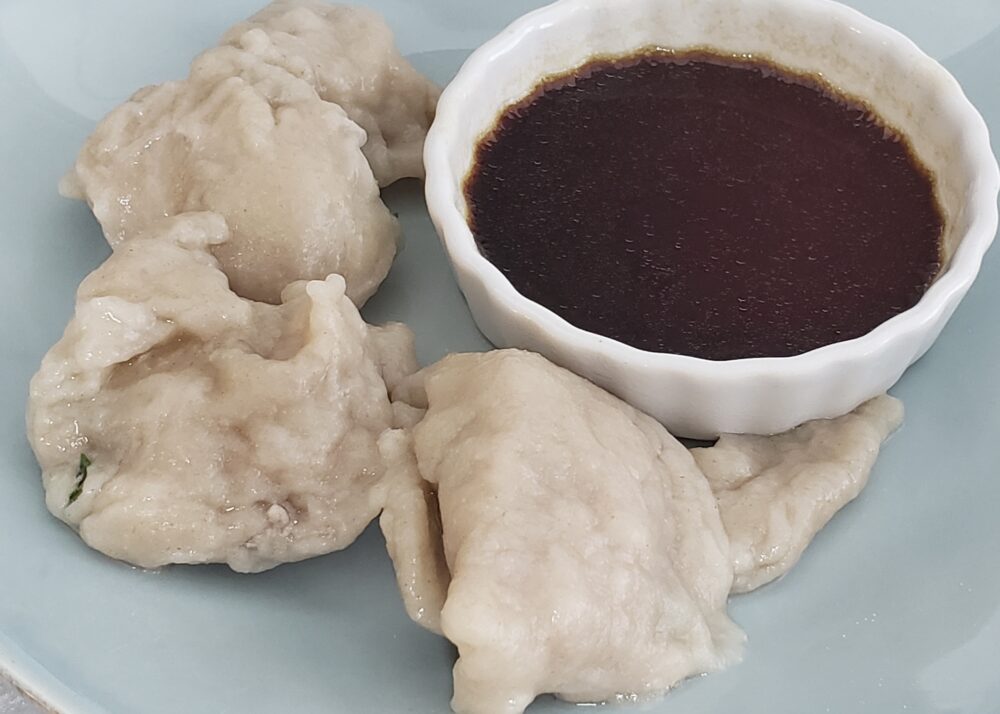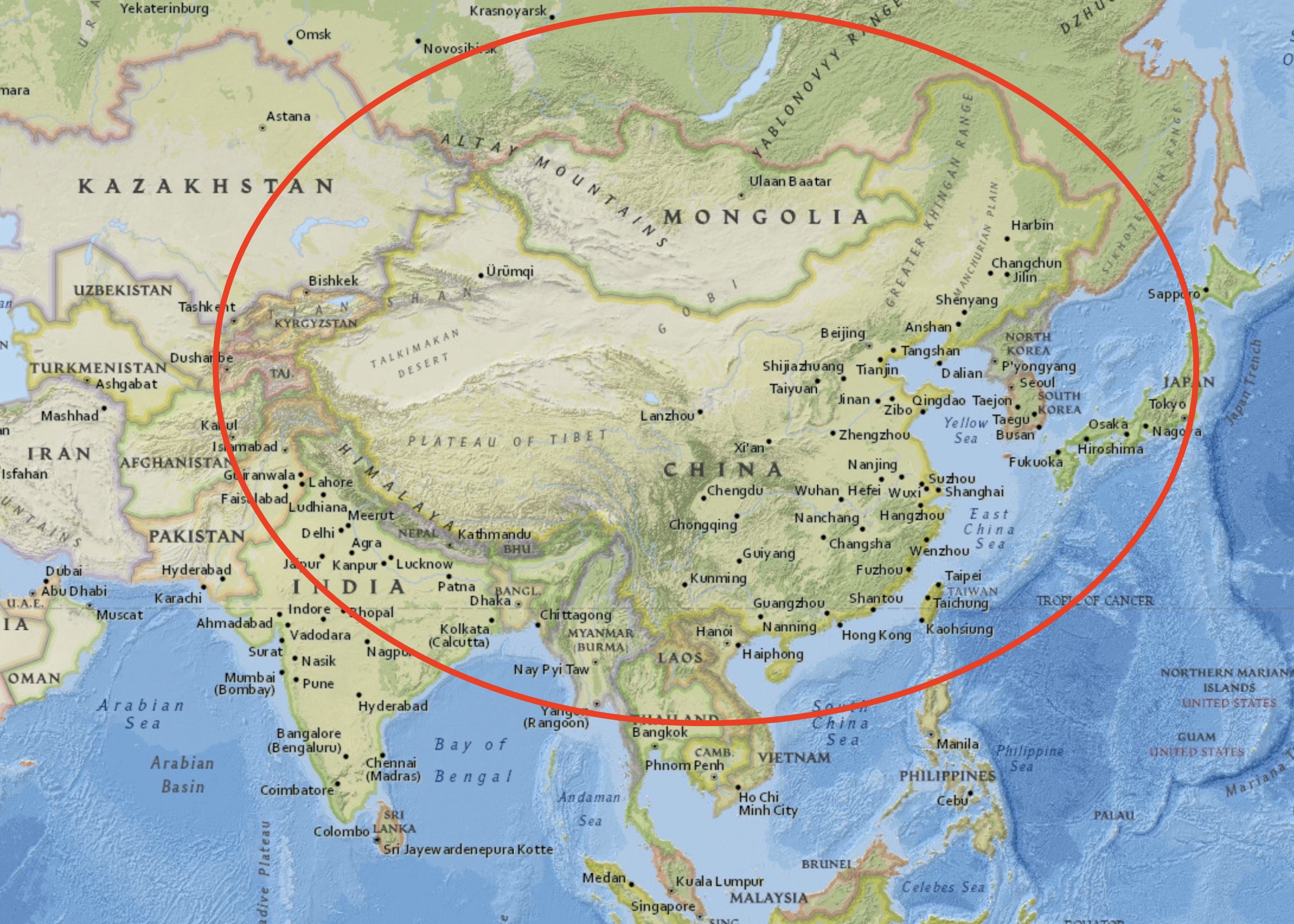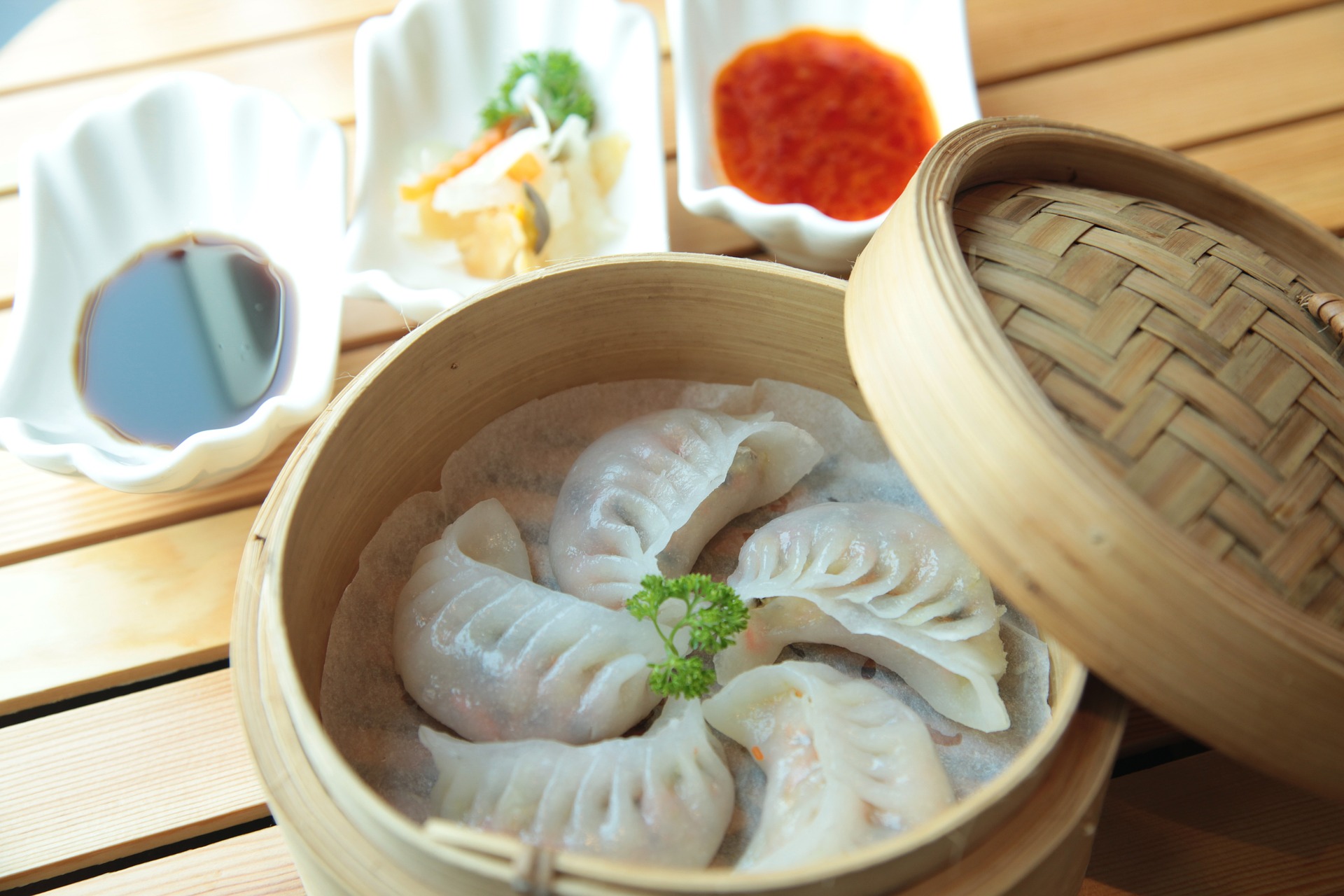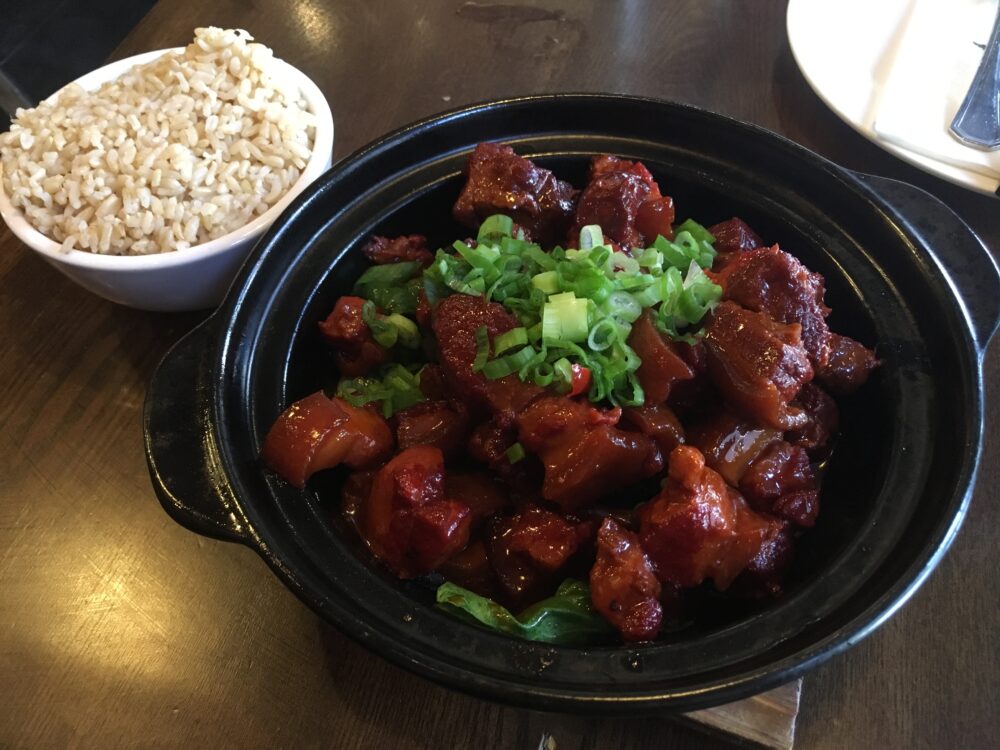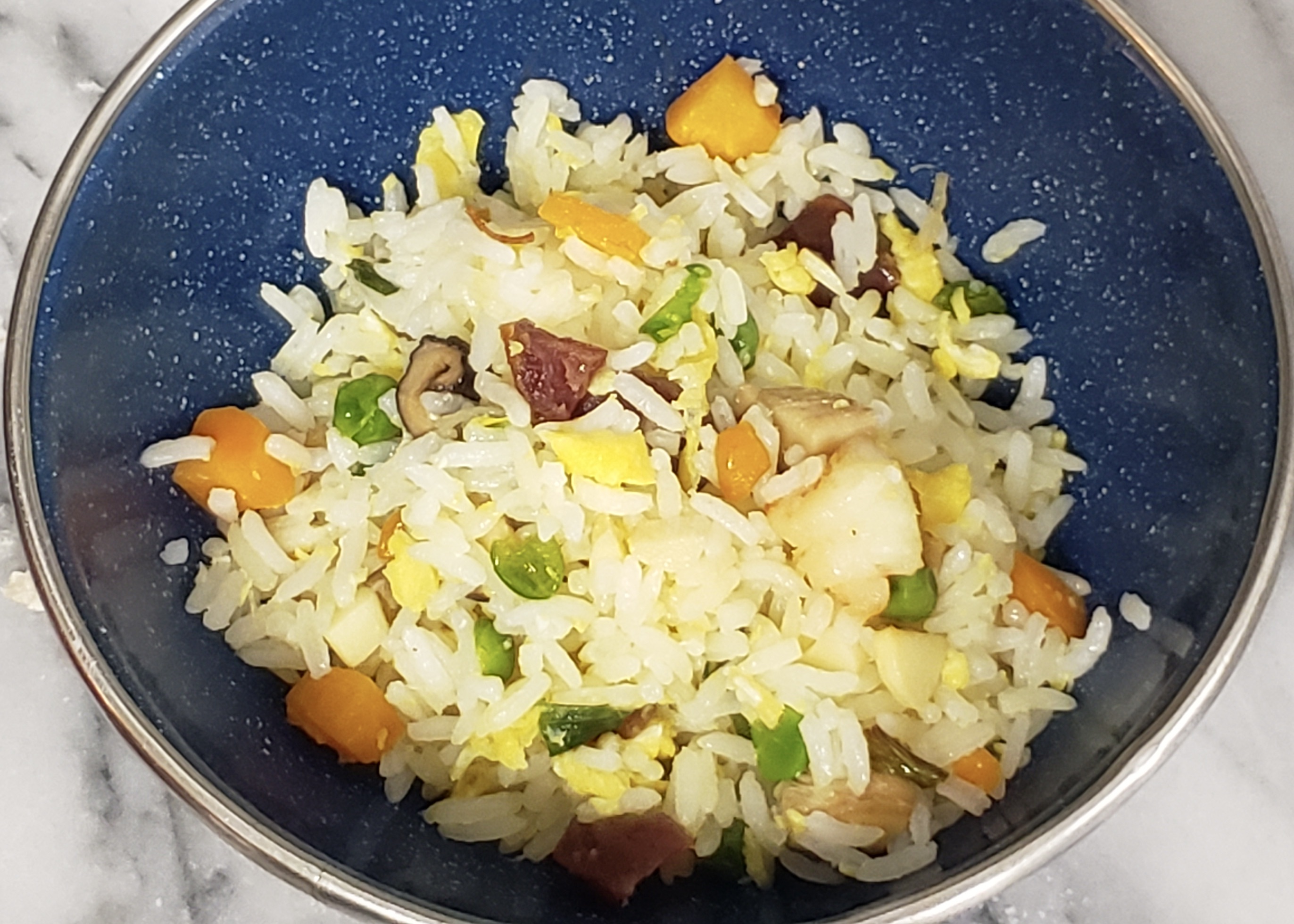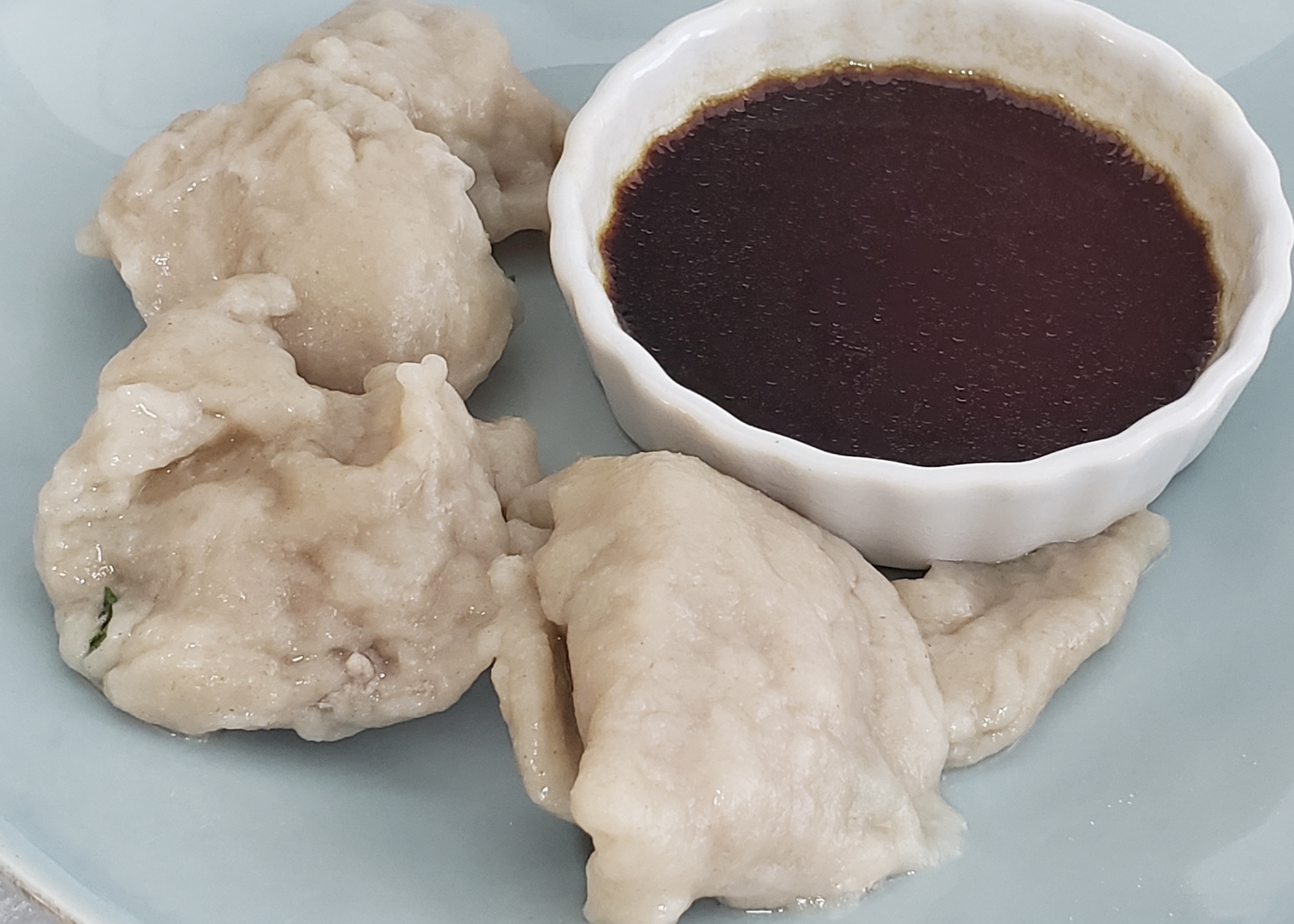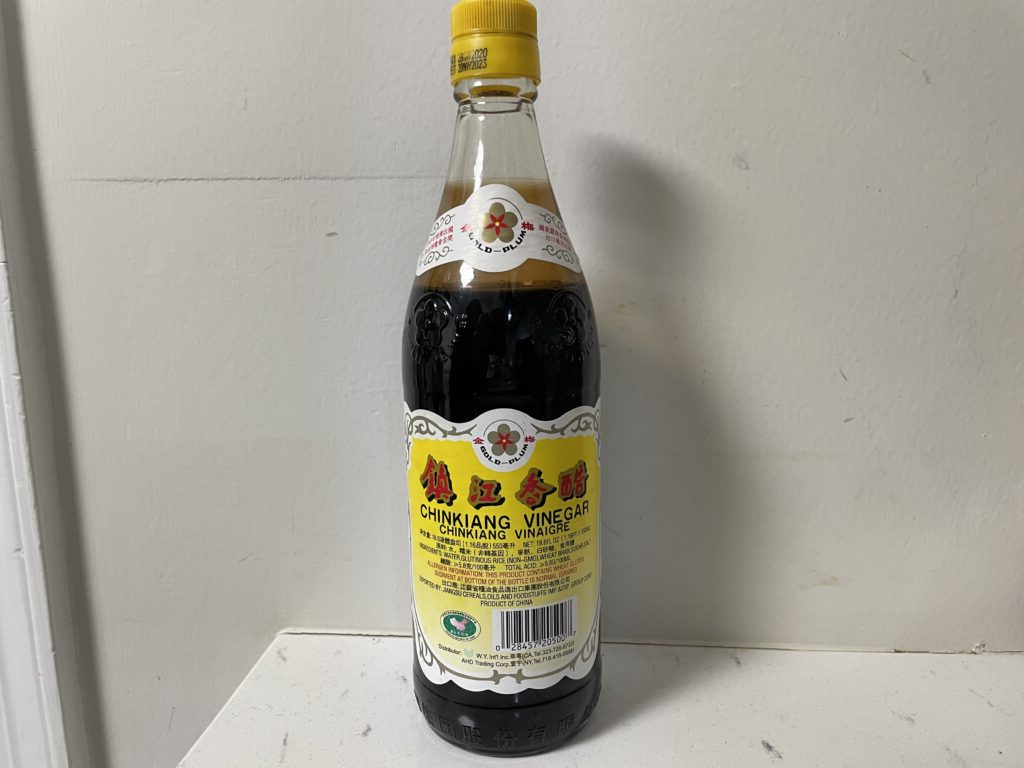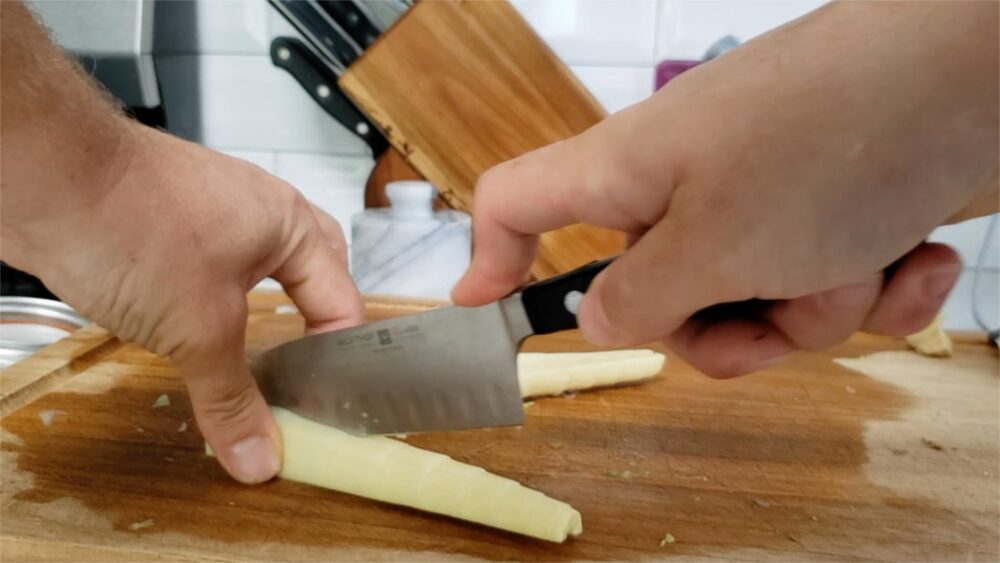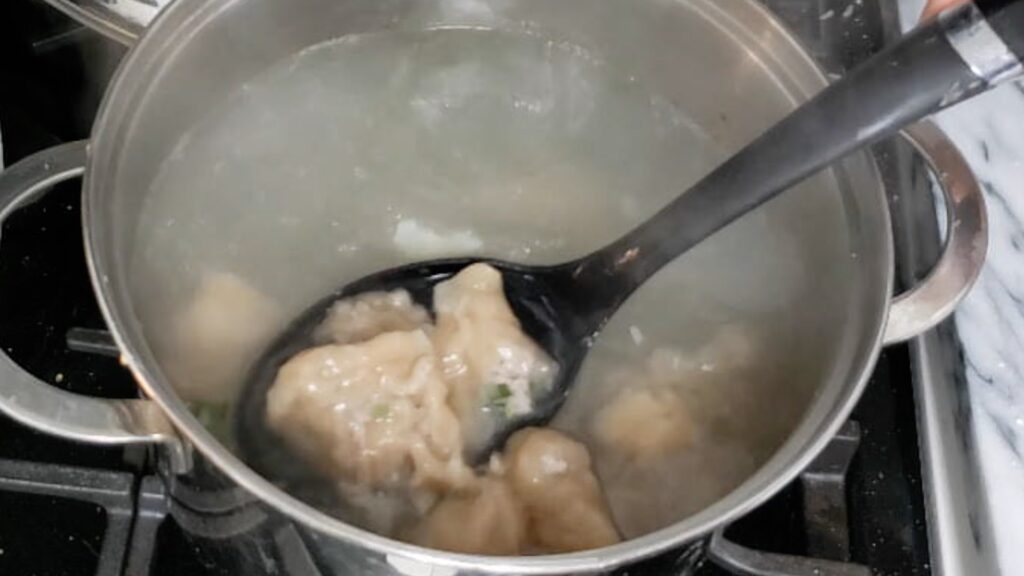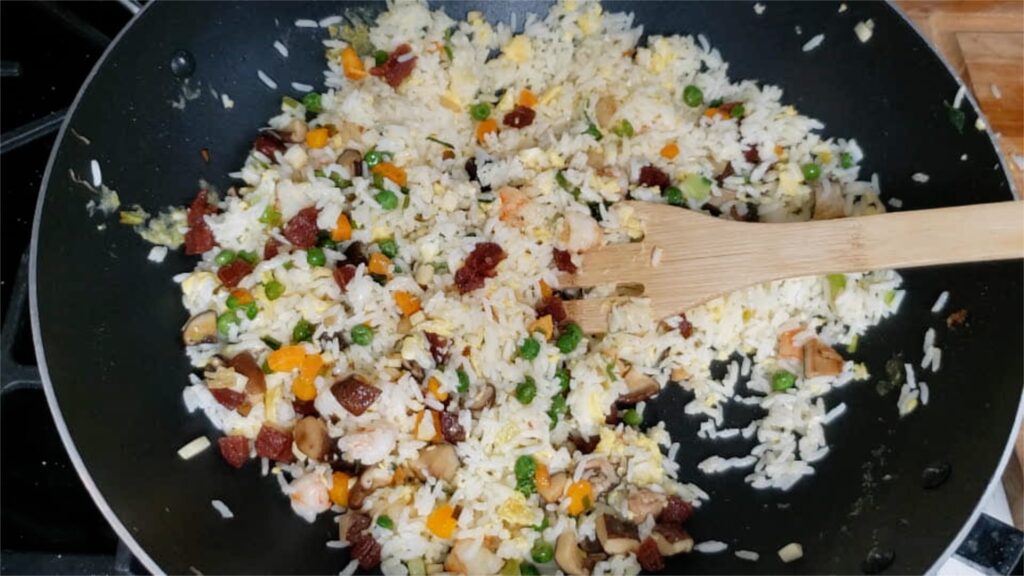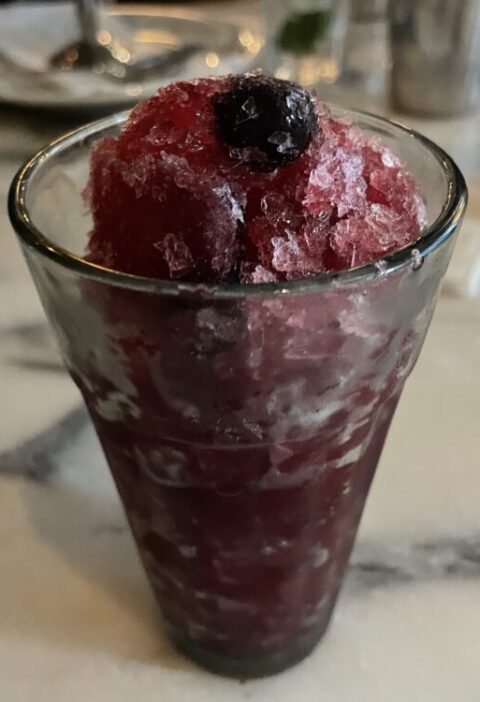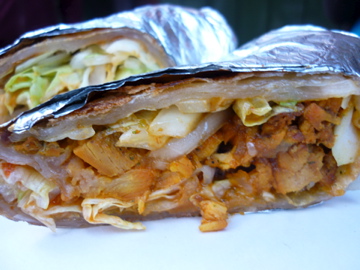Sam has been asking about this country from the day we started this project. Obviously, China finds its way into popular culture much more than a place like Bhutan. I think he learned about China from his Thomas the Tank Engine Stories. And to this day, it is still the country he seems to want to visit the most. That would be cool. But for the time being, we’ll bring a little bit of China into our kitchen.
THE PLACE AND ITS CUISINE
I don’t think I need to go too in-depth as to where China is. You may have heard of this ginormous country in East Asia. It is the third largest country in the world and the most populous, so there are a lot of people and a lot of food.
And more than any other country we have cooked so far, there is a huge diversity in terms of geography, terrain, crops, cuisine, etc.
In fact, it’s pretty absurd to just dedicate one blog post and episode on China. Maybe we will delve further into it on future episodes.
In terms of food, there are eight distinct agreed upon culinary regions. And then there are many more sub-regions. We could dedicated not just the post but this entire blog about Chinese food.
We’ll spare you since there are many more of those blogs already out there, but we’ll quickly run through the main eight.
CANTONESE:
This is the cuisine that influenced most Americanized Chinese restaurants and is the most popular Chinese food outside of China. Based around the Guangdong region (near Hong Kong), the cuisine is known for both its fresh ingredients and dried ingredients with mild spices and lots of herbs. Scallions, ginger, and garlic are by far the most important flavorings. You’ll find lots of seafood and vegetables and the food is often steamed and stir-fried.
Traditional Dishes: Dim Sum, Steamed Pork Buns, Turnip Cakes, Sweet and Sour Spareribs, Poached Lobster
SICHUAN:
This might be my favorite. The cuisine from the Sichuan province is known for its spicy, bold flavors. A highlight of the cuisine is something known as “má là, which means numbing and spicy. The intense and unique Sichuan peppercorns used in many dishes can give the experience of your tongue thinking still water is sparkly. Lots of oil, salt, and chiles in most dishes. Not for the faint of heart.
Traditional Dishes: Mapo Tofu, Dan Dan Noodles, Wontons in Red Chili, Hot Pot, Twice Cooked Pork
HUNAN:
In some ways, this is similar to Sichuan cuisine, but the food of the Hunan province has quite a distinct flavor. It is also very bold and spicy with lots of dried chiles, salt, and oil, but the flavors are considered “dry spicy.” Many of the ingredients are fermented, dried, and pickled.
Traditional Dishes: Chairman Mao’s Red Braised Pork, Steamed Fish Head with Chopped Chiles, Stinky Tofu, Shredded Pork with Green Peppers
FUJIAN:
Traditional Dishes: Lychee Pork, Hokkien Fried Rice, Buddha Jumps Over the Wall (a complex soup with 30 ingredients), Stewed Chicken with Three Cups Sauce, Fish Ball Soup, Oyster Omelette
JIANGSU:

This cuisine has a major focus on fish and rice and can be thought of as intricate and elaborate. Many of the dishes have unique names and take a lot of technique to create. In terms of flavor, it really showcases umami with a focus on the natural flavors of the ingredients. The region is also known for its famous vinegars. There are also many sub-regions of Jiangsu so it can vary quite a bit.
Traditional Dishes: Yangzhou Fried Rice, Lion’s Head Meatballs (actually pork), Wuxi Pork Ribs, Salted Duck
ANHUI:
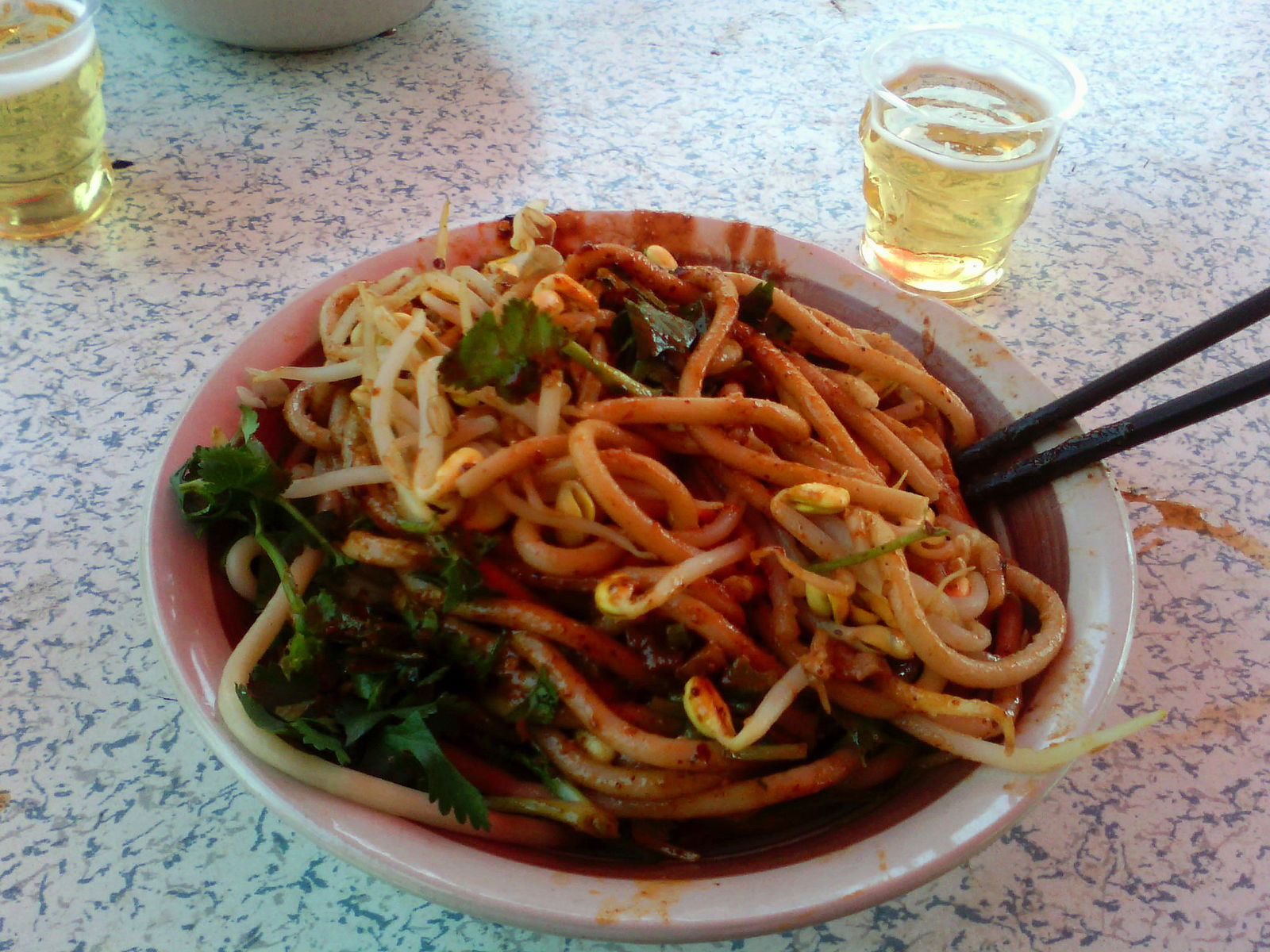
Anhui cuisine is rustic and hearty, using wild ingredients found in the Yellow Mountain range. Wild herbs, mushrooms, chilies, vegetables, game, and other ingredients from the mountainside are usually the basis of the dishes. The food is often braised and stewed.
Traditional Dishes: Egg Dumplings (wrappers made from eggs), Stinky Mandarin Fish, Fried Hairy Tofu, Stewed Soft-Shelled Turtle with Ham, Stewed Bamboo Shoots
ZHEJIANG:
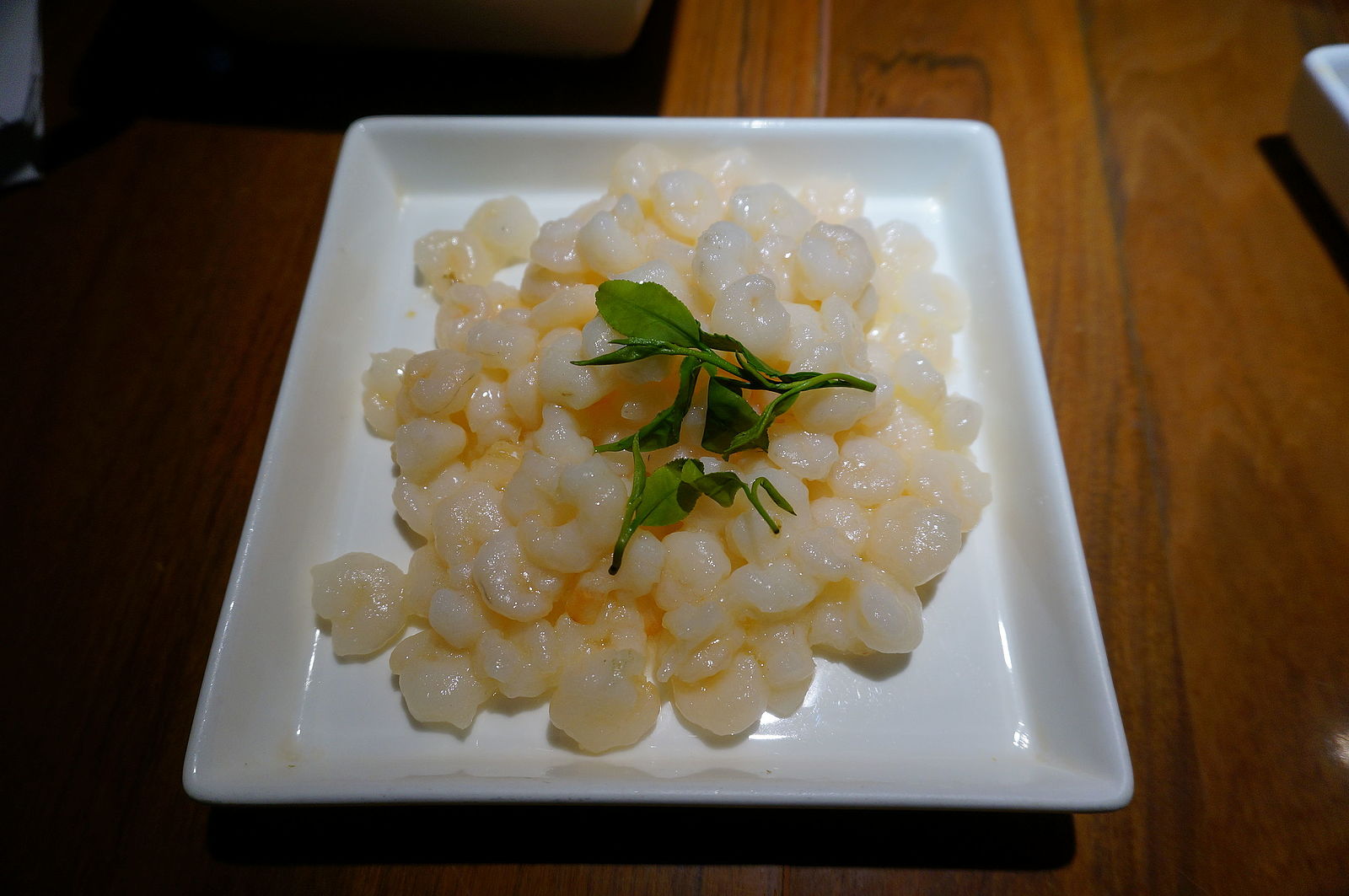
Also known as Zhe cuisine, this province really spotlights seafood thanks to its access to the coast and many waterways throughout. There is an array of cooking methods used – everything from braising, stir-frying, deep-frying, and steaming. Flavors are often mellow, especially sweet and salty. This is also the home to Shaoxing cooking wine, an incredible addition to almost any Chinese dish.
Traditional Dishes: West Lake Vinegar Fish, Beggar’s Chicken, Dongpo Pork, Shrimp with Longing Tea,
SHANDONG:
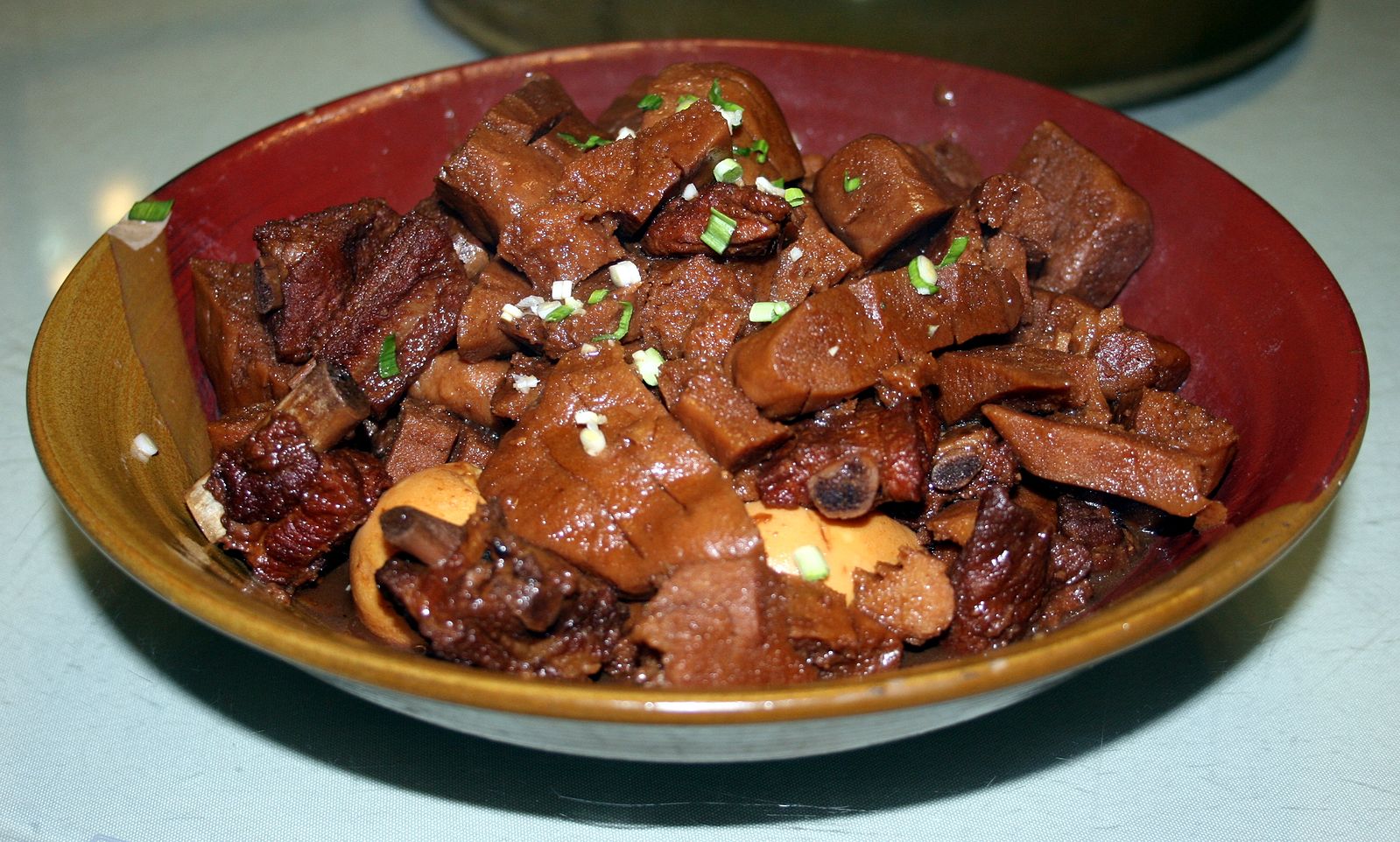
This is considered the oldest of all the Chinese cooking traditions, especially from the Northern region. The techniques are fit for a king and pretty complex. Seafood and vegetables are prized. Dishes are often braised and cooked with the “bao” method which involves boiling oil in a hot wok and cooking the ingredients very quickly to seal in flavor but not allowing it to get greasy from the oil.
Traditional Dishes: Moo Shu Pork, Braised Sea Cucumber with Onions, Dezhou Stewed Chicken, Sweet and Sour Carp
So these are the 8 traditional cuisines, but many modern foodies will argue there are many many more. Throughout my journeys in New York and research for this project, I also want to give a shout out Shanghai, Yunnan, Xi’an, Henan, and Dongbei cuisines. All distinct and really incredible.
It’s impossible to summarize the options for Chinese food in New York in this small little paragraph. Suffice it to say there is no less than nine Chinatowns around the city. Nine!!
I spent a chunk of this blog searching for the best Chinese dumplings around the city (although have not nearly penetrated the full offerings), not to mention exploring (and eating) as much as I can.
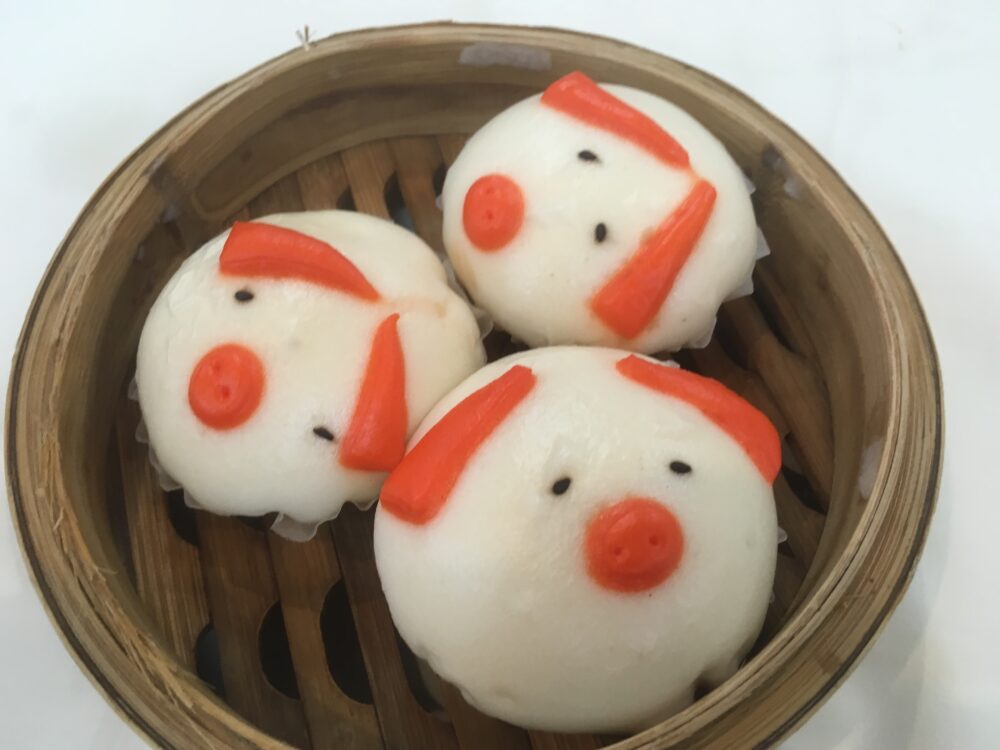
I won’t pick a favorite Chinese restaurant (it’s nearly impossible – see above), but I will urge any interested readers when visiting to NYC to not just visit the streets in Manhattan around Canal, but also Flushing, Sunset Park, and Elmhurst.
THE VIDEO
Sam is truly amazing. When I get discouraged by the difficulty of rolling out dumpling dough, he pushes through and gives us both the confidence to not give up.
They may not have come out perfect (or even close to that), but we did it. All thanks to my little guy who won’t try Chinese food, but can’t wait to go visit China.
He does decide he wants to try parts of the Jiaozi. First, he wants to see what raw dough tastes like (that’s my boy, trying new things!) and then he wants to eat as many dumplings as he can… without the filling. So, basically he makes a meal of raw and then boiled dough!!
THE DISHES
So if you’ve read the previous sections of this post, you know how impossible it is to pick one or even two dishes to represent Chinese cuisine. What I would really like to do is dedicate a sub-series and make an episode on each of the different regions and sub-regions. China deserves more than an episode – it deserves an entire series.
And we very well may come back to it, but for the purposes of this project (and because Sam would not have accepted skipping a China video), we picked two dishes that are well-known and may be found in many parts of the giant country.
Fried rice, while being on every Chinese menu across the US (and probably the world), is also quite popular in many parts of the actual country.
It is believed to have originated in the Sui dynasty in the city of Yangzhou which is in the Jiangsu province somewhere between 589-618 AD. A little before the internet. The dish was created as a use for leftovers and still works well that way.
Yangzhou Fried Rice (which is what we decided to cook) is the original, but there are many variants across China (Hokkien, Sichuan, etc.) and elsewhere at this point.
The original Yangzhou Chaofan (Fried Rice) is not loaded down with a sweet dark sauce like you might find at your local Chinese place. The sauce is refined and light and the ingredients are a mix of meat, vegetables, and seafood. Probably most important outside of the rice is the egg.
Pre-cooked rice (preferably long-grain) is best since it is drier and won’t stick together so easily.
Our other choice for a dish to represent China is something eaten across the country during the Lunar New Year: Jiaozi, or pork dumplings.
I know these pretty well having spent a good deal of my time in New York picking up a handful for a cheap lunch, a blog post, or on a food tour. You can find them boiled, steamed, or pan-fried. Pork, chives, cabbage are the most common fillings, but you can also find beef, chicken, or lamb. We stuck with the boiled pork option for this experiment. In retrospect, we should have gone crazy and tried both. With all the free time we had.
Every culture has a version of dumplings (stuffing wrapped around a dough), but these originated in northern China among the Han people and their shape is deliberate. They were made to look like an ancient type of money. This is one reason they are eaten during the New Year, because people believe it will bring them luck and fortune in the coming months. I can not confirm or deny if that is true.
The word jiaozi also sounds like a term in Chinese that means “from the old to the new,” which is a perfect metaphor for a New Year celebration.
One of the older traditions was to wrap a gold coin around one or two of the dumplings and whoever bit down on the coin dumpling received luck. And a broken tooth.
Today, it is more common for families to begin making the jiaozi before midnight and have them ready to eat together when the clock strikes 12.
SPECIAL INGREDIENTS:
So we cook a lot of Chinese inspired dishes in this house so a good number of these ingredients (soy sauce, rice vinegar, sesame oil, ginger, scallions, etc.) are staples in our pantry. And they are pretty easy to find so I don’t consider them overly unique for these purposes.
However the following might be a bit more unusual to have in most American kitchens and a bit harder to find.
Chinese Chives
Also known as garlic chives, these look pretty similar to the chives you may be used to, but they are on a whole different level. And the best way to tell the difference is by the smell. It is very fragrant and almost pungent. You can use regular chives, leeks, or garlic scapes in place of it, but if you have an Asian grocery store nearby, it is worth seeking these out.
Shaoxing Wine
This is a secret ingredient in almost every Chinese dish I’ve made before. This aged rice wine adds an incredible unique rich flavor to every dish. Pick up a bottle not just for these recipes but for every time you make a marinade or stir fry. You’ll thank me.
Chinkiang Vinegar
Another must-have seasoning, this black vinegar is made from fermented black sticky rice. It has big complex umami flavors with hints of malt. Just like balsamic vinegar, it adds a sweet acidic flavor to marinades and sauces. It is part of the perfect dumpling dipping sauce.
Lap Cheong (Chinese Sausage)
This is an irresistible Cantonese sausage that is sweet, smoky, and salty. It is made from pork, fat, and spices. MSG (monosodium glutamate) adds some savory saltiness, red rice yeast adds a bright color, and the addition of Baiju (a strong rice liquor) adds a very unique flavor. These might not be the healthiest, but it’s as tempting (and no less unhealthy) as an American hot dog.
Bamboo Shoots
China’s national animal (the giant panda) knows about these all too well. The shoots of the bamboo are tender and creamy and used a lot in stir-fries and soups. Most likely, you’ll find them canned or frozen, but if you look in the right store at the right time, you might find them fresh (we did not). Flavorwise, they are pretty mild – can’t say the Pandas have a very sophisticated palate.
THE RECIPE
Recipes inspired by:
redhousespice.com
chinasichuanfood.com
thewoksoflife.com
seriouseats.com
soupeduprecipes.com
Jiaozi (Pork Dumplings) from China

These classic Chinese dumplings originally come from the northern part of China, but are now eaten throughout the country, especially during the Lunar New Year. This recipe is a fun albeit labor intensive way of making these little bites at home. A delicate dough is stuffed with a satisfying mix of pork, chives, and seasoning. You can boil them, steam them, pan fry, whatever you wish. And they should be served with a soy vinegar sauce for good measure.
- Small Rolling Pin
- Frying Pan
- Hand Mixer (if desired)
Wrappers (if not buying pre-made)
- 3 cups All Purpose flour
- 1/2 tspn salt
- 1 egg (mediium)
Pork Filling
- 1/2 head Chinese cabbage
- 1 pound ground pork
- 1 inch ginger (peeled and grated)
- 2 cloves garlic (minced)
- 1 tspn salt
- 1 tbspn Shaoxing cooking wine (or dry sherry)
- 1 tbspn soy sauce
- 1 tspn sesame oil
- 1/2 tspn sugar
- 1/4 tspn white pepper
- 1/2 cup Chinese chives (or garlic chives) (chopped)
Dipping Sauce
- 1 tbspn soy sauce
- 1 tbsn Chinese black vinegar (also known as Chinkiang vinegar)
- 1 tbspn chili oil
Make Filling
- Cook cabbage in boil water for about five minutes. Remove and drop in ice cold water to stop it from cooking.
- Wring out as much water as possible from cabbage leaves and then chop finely.
- In a large bowl, combine pork, grated ginger, minced garlic, salt, wine, soy sauce, sesame oil, sugar, and white pepper.
- Use a hand mixer or your hands to mix the filling very well.
- Then add in cabbage and Chinese chives and continue to mix well.
- Refrigerate the filling for about 30 minutes.
Make Wrappers
- Mix flours and salt in a big bowl.
- Add 1 – 1.5 cups of boiling hot water,
- Either with a stand mixer or your hands (once cooled), knead very well until a smooth dough is created.
- Wrap dough in plastic wrap tightly and let rest for 20-30 minutes.
Roll Out Dough
- After resting, knead dough again to ensure it is smooth. Add a touch more flour if necessary.
- Divide the dough into equal parts (3 or 4) and roll each part into a ball.
- Roll each section with your hands into a long rope or snake about 1 inch in diameter each.
- Cut the rope into about 10 equal pieces.
- Press each piece into a disk shape. Then use a small roller to roll them into a round thin wrapper.
- Repeat with all the other pieces and cover the rolled wrappers with a wet kitchen towel to ensure they do not dry out.
Form Dumplings
- Take a small spoonful of the meat filling and place in the center of a wrapper. Bring the bottom of the wrapper to the top and gently press the dough together to seal and form a crescent shape.
- Repeat with all the other dumplings, again keeping the others moist under a wet kitchen towel.
Cook Dumplings
Boil
- Bring a large pot of salted water to a boil.
- Gently slide each dumpling into the boiling water. Cover.
- When the water comes back to a boil, lower the heat (or add in a little bit of cold water)
- Cook until the dumplings come floating to the top of the water. Drain.
Pan Fry
- Heat up cooking oil in a big pan over high heat.
- When the oil is very hot, gently add each dumpling.
- Let the dumplings brown without moving them around for a few minutes.
- When the bottom becomes golden brown, carefully add in some cold water to the pan and quickly cover.
- Cook for a few minutes until cooked through and the water has evaporated.
Eat
- Mix dumpling sauce ingredients together in small bowl.
- Serve dumplings with dipping sauce.
Fried Rice (Yangzhou Chaofan) from China
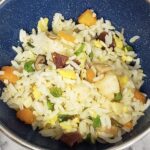
One simple way to make ordinary white rice taste even more delicious. Loaded with vegetables and meats, this fried rice is similar to what you’ll find at Chinese restaurants across the US and is rather simple to make once you gather all the ingredients.
- Wok
Rice
- 2 cups jasmine rice (cooked and chilled )
- 3 tbsp vegetable oil
Proteins
- 5-6 dried scallops
- 2.5 ounces shrimp (chopped)
- 1 ounce Lap Cheong sausage (diced)
- 2 eggs (beaten)
Vegetables
- 3-4 dried shiitake mushrooms
- 1.5 ounces bamboo shoots (chopped)
- 1.5 ounces frozen peas
- 2 cloves garlic (minced)
- 1 medium carrot (diced)
- 2 scallions (thinly sliced)
Sauce
- 1/2 tspn salt
- 1 tspn sugar
- 1 tspn Shaoxing cooking wine
Rehydrate
- Cover dried mushrooms and dried scallops with hot water and let hydrate for 2-3 hours.
- Remove, chop mushrooms, and scallops, Reserve liquid.
Make Sauce
- Add 3 tbsp mushroom liquid, salt, sugar, and wine to a bowl. Mix well until sugar is dissolved.
First Round
- Heat 2 tbsp of oil in wok to medium heat and add garlic. Cook quickly for no more than one minute, stirring constantly to prevent burning.
- Add in scallions and stir for about 1 minute.
- Next, add carrots and shrimp. Cook for about 3-5 minutes.
- Add mushrooms and scallops and stir for another few minutes.
- Next, throw in bamboo shoots and peas. Cook another two minutes.
- Finally add in Lap Cheong sausage and stir well to heat through. Remove from wok and set aside.
Second Round
- Heat wok again to high and add additional oil. Add beaten eggs and constantly stir to break up and scramble.
- Add rice to wok and stir to mix with egg bits. Cook for a few minutes to heat up and separate rice.
- Add the other ingredients and mix well.
- Add in sauce and continue mixing to incorporate all the flavors.
- Sprinkle in salt and mix well before serving.
HOW WE SCREWED IT UP
I’ve made Jiaozi once before many many years ago for a cheeky Christmas dinner. I took my time and somehow they came out really amazingly. I wish I could say the same held true this time. These were mostly a disaster!
And an interactive child was not my downfall. First off, I think I made the mistake of combining AP flour with bread flour. Many recipes said this could help emulate dumpling flour, but I think my ratio may have been off. The dough turned out incredible dense and sticky.
We also didn’t chill it for the full 45 minutes and I think that may not have helped matters.
With the help of some more flour and Sam’s encouragement, we were able to salvage a few pieces and rolled them out. They were quite hard, not as smooth (or nearly as thin) as I would have liked. We also didn’t really have the proper rolling pin but substituted a muddler. Sam just used his hands.
So while we were able to get some of the filling inside some of the wrappers, they didn’t stay together well and came out less than beautiful.
I also should have thought to only boil some of them and maybe see if pan-frying could have helped. The dumplings tasted doughy and a bit chewy. Sam actually didn’t mind.
The pork mixture inside was nice. I have been making similar dumplings using cabbage instead of dough for my gluten free wife. So I’ve managed to get the filling just right.
The fried rice, on the other hand, came out pretty well. It could have maybe used a hint more salt (or MSG), but very few complaints about that dish. Sam, however, had lots of complaints about all “the stuff” in his rice.
We also planned to make one more dish – smashed Sichuan cucumbers – but we totally forgot to prep this and time got away from us. Sam wouldn’t have eaten them anyway.
SAM’S REACTION
Sam loves rice. He eats it a few times a week covered in soy sauce. So I thought for sure the Chinese food would be a hit using many of the same ingredients.
I should have known he would have resisted the fried rice. There were too many “things” inside it. He did take a taste of the Lap Cheong sausage, which I was surprised he didn’t like. Too sweet, I think, believe it or not.

He also demanded a dumpling without anything inside it. So basically, just boiled dough. Once he mastered the art of chopsticks, he absolutely loved the boiled dough dipped into the sweet dumpling sauce. I don’t know – can these be considered a dumpling when it’s just the outside?
His favorite thing of the entire day was the secret bite he took of raw dough. I told him he wouldn’t like it, but he insisted and his face lit up as if he took a bite of candy. Kids are so weird. Did he say he liked the raw dough because I told him he wouldn’t? Or did he really like the wet grainy saltiness of flour and water? Who knows?
NEXT TIME
Most American kids Sam’s age have some relationship to Colombia at this point. It is the setting for the film Encanto. While Sam also sometimes sings about Bruno, we focus instead on one of Colombia’s most famous dishes…

